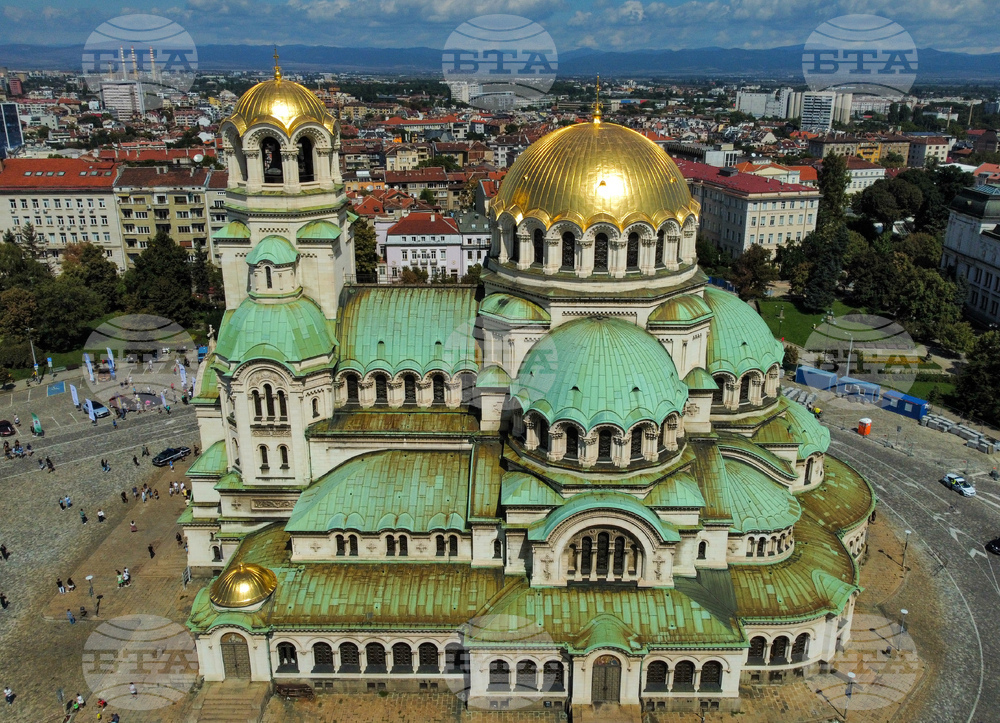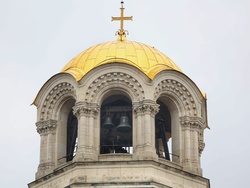site.bta142 Years Ago Bulgaria Lays Foundation Stone of St. Alexander Nevsky Memorial Cathedral


This year, the St. Alexander Nevsky Memorial Cathedral marks the 142nd anniversary of the laying of its foundation stone (February 19, 1882) and the 100th anniversary of the consecration (September 12 to 14, 1924).
According to BTA archives, the decision to build the cathedral was taken by the Constituent National Assembly in 1879, convened in the old capital of Veliko Tarnovo (Tsarevgrad Tarnov), as an expression of national gratitude for the liberation activities that led to the restoration of Bulgarian statehood. The chairman of the assembly was Exarch Antim I and the deputy chairman, Petko Karavelov.
The original idea of Petko Karavelov was to build the cathedral in Tarnovo, but according to Prince Alexander of Battenberg, the place of a national cathedral, which would remind of all those who made their contribution to the Bulgarian freedom, was in the actual capital (Sofia), although it was yet to establish its importance in the young state.
A Construction Committee was set up with Bishop Clement of Branitsa (Vasil Drumev) as chairman. To raise funds, the Committee printed the Constitution in 40,000 copies and began selling them among the people for BGN 0.50.
The first stone was laid on February 19, 1882. Konstantin Jireček described the event in his diary: "On Friday, at 11:30 a.m., in cloudy weather and a little rain, the ceremonial laying of the foundation stone of the St. Alexander Nevsky Church took place... at the place of the former military Turkish barracks behind St. Sophia [Church]."
This Vitosha granite, a monolith-morena, is preserved in the crypt of the memorial cathedral, intended for the pantheon of eminent and meritorious Bulgarians. Since 1966, the crypt has been reconstructed into a Medieval Bulgarian Icons Gallery, a branch of the National Art Gallery in Sofia. Visitors can see the valuable Bulgarian icons and frescoes from the 12th-19th centuries.
Two texts were laid in the cathedral's foundations: one engraved on a metal plate and the other, written on parchment. They commemorate the events of the Russo-Turkish War of Liberation of 1877-1878.
Construction only began in 1904, after the necessary resources had been raised through state subsidies and voluntary donations. Despite the long time until the start of construction works, the funds raised amounted to BGN 1,900,000 in 1904 and reached BGN 2,100,000 at the end of 1906. The architect was Prof. Alexander Pomerantsev, assisted by architects Alexander Smirnov and Alexander Yakovlev.
Architecture
The temple is a five-aisled cruciform basilica with multiple domes and a gilded central one. Its interior is divided into three parts: narthex (with two chapels), central part and altar (with three thrones). Viewed from the outside, the length of the cathedral is 72 m and the width is 55 m. Its height is 50.52 m and the roof bridge is 28 m.
Despite the scale and complexity of the construction, it was completed in a record time of eight years. The interior of the memorial cathedral is impressive for its masterly execution of the columns, arches, capitals, friezes, architectural elements and rare types of building materials used for their decoration. Highly artistic frescoes, icons and other paintings are the work of 20 Russian and 30 Bulgarian artists, some of the best artists of both countries at the time.
The bells of the temple were made in Moscow and given to Bulgaria as a gift in 1911. There are 12 of them with a total weight of 23 tons. The largest of them weighs 12,132 kg, its diameter is 2.70 m and the height is 2.80 m. The two largest bells, the 12-ton and the 6-ton ones, have artistic decoration, relief icons and inscriptions. All the bells are rung by hand.
The name of the Memorial Cathedral
The name of the Memorial Cathedral has stirred controversy since the First World War.
Alexander Nevsky was a Novgorod prince and saint. In 1240 he recorded an impressive victory in the battle on the Neva River, after which the prince was given the name Nevsky. Soon after, Nevsky renounced secular life and was given the monastic name Alexius. The Russian saint is the namesake of Alexander ll the Liberator, in whose honour the memorial cathedral was built.
During the First World War, in which Russia fought against the Bulgarian army, King Ferdinand proposed to rename the cathedral "Saints Cyril and Methodius". The proposal was approved and accepted by the government of Vasil Radoslavov after heated debates. After Bulgaria's defeat in the war, all wartime decisions were revised. St. Alexander Nevsky Cathedral continued to exist with its original name shortly after the act of renaming. The first celebratory ringing of the bells took place in the capital earlier - after the victory of the Bulgarian army that led to the capture of the fortress of Edirne in 1913.
/DS/
Additional
news.modal.image.header
news.modal.image.text
news.modal.download.header
news.modal.download.text
news.modal.header
news.modal.text







